From Herald Scotland Newspaper
They were secretly tested in Scottish waters and then went on to blow holes in the side of three dams during one of the most daring wartime missions.
In May 1943 19 aircraft, crewed by 133 young men, took off on the daring and innovative Dambusters raid.
What is less well known is that the bouncing bombs dropped from those legendary Dambuster raids were tested in a series of secret operations on a Scottish loch.
The tests were carried out on Loch Striven, which is on the Glenstriven estate in Argyll, with locals being evacuated from the area so they would not know what was going on.
Loch Striven was also home to two dormant gas carrying ships, the Nestor and the Gastor, for 14 years. Two Harland and Wolff oil tankers were also laid up in the loch for almost 20 years, while an X-class submarine was lost in the water due to an engine leak in November 1942.
As the nation prepares to mark the 70th anniversary of the raid, a retired fighter pilot has revealed the true extent of the damage the mission caused to Nazi Germany.
Clive Rowley, a former commanding officer of the RAF's prestigious Battle of Britain Memorial Flight (BBMF) turned aviation historian and author, said the military and strategic significance of destroying three dams in the industrial heartland of Germany in 1943 has only just been realised.
The 133 men who went on the mission in 19 aircraft, 56 of whom did not return, were also incredibly courageous and skilful in carrying out the daring low flights, he said.
Operation Chastise, the attack on German dams immortalised by the 1955 film starring Michael Redgrave and Richard Todd, took place 70 years ago on May 16, 1943, during the Second World War.
The mission was launched from RAF Scampton, near Lincoln by 617 Squadron.
At the time it was hailed as an incredible success even with the loss of life, but for decades afterwards its effects were downplayed or even condemned as a waste of resources by a succession of historians.
Now, extensive research carried out by retired Squadron Leader Mr Rowley suggests that the loss of water caused by the dams' destruction had a far greater effect than many realised even at the time - from making firefighters powerless to put out the flames of British incendiary bombs to cutting vital German steel production due to a lack of water for cooling.
The cost of repairing the damage caused by 617 Squadron's raid ran to the equivalent of £5.9 billion in today's money and 7,000 workers who would otherwise have been building the Atlantic Wall to prevent the D-Day landings had to be called away to fix the ruined dams.
It was an economic disaster for the Third Reich that diverted significant resources away from Germany's war effect at a critical point during the conflict.
Four power stations were destroyed, 12 war production factories, about 100 other factories damaged, railway bridges were incapacitated, bridges knocked down, and 3,000 acres of farmland destroyed.
Coal production also dropped by some 20,000 tonnes in the month that followed and steel production by about 180,000 tonnes in the month that followed.
Mr Rowley said: "In that sense it was truly militarily important, strategically important, and I think that more modern research has uncovered that and hasn't been widely recognised until now."
Mr Rowley, who in addition to flying one of the Coningsby-based BBMF's Spitfires and commanding the unit also flew BAC Lightning jets, has published his findings in a new bookazine called Dambusters.
It combines his detailed research with previously unpublished pictures and original artwork to provide a full and unvarnished account of the raid - arguably the most daring mission in the RAF's history.
The timescale in which the raid came about - the Lancaster had only been in squadron service for 17 months, and there was only 56 days from the formation of the squadron to the bombings - was nothing short of amazing, Mr Rowley said.
He went on: "Then you were asking these men, 133 men went on the raid in 19 aircraft, to fly these enormous bombers with 102 foot wingspan at 100 ft, 60 feet on the attack run, in the dark.
"I've spent a lot of my life as a fighter pilot flying around at low level normally at 250 feet in fast jets, sometimes lower, often quite a bit faster than the Dambusters flew, but generally in daylight.
"I can state categorically that the courage, the skill, the tenacity to carry on doing what they were doing - and actually it would appear that they were enjoying the thrill of it -is nothing short of amazing.
"It was a combination of bravery, skill, ingenuity, science, technology, all came together in this one precision raid."
The Dambusters crew would have been fearful, he said, but appeared fearless in order to boost morale among their fellow airmen.
They are also sure to have enjoyed the thrill of low level flying, Mr Rowley added. "To them it was just a job and they just got on and did what they were asked to do and paid an enormous price for it.
"42% of the men that went on the raid did not come home, and they knew that was highly likely, and yet they volunteered for the new squadron, they volunteered for the mission. They wanted to make a difference.
"When it came to the actual getting in the aeroplane and doing it they tended to have a fatalistic attitude. From now on what will be will be.”
Remembering and commemorating the mission, especially with such heavy losses was vital Mr Rowley said, and even more so now to acknowledge the full extent of the effect on Nazi Germany.
He said: "It is important to recognise that it was worthwhile and that the results were worth their death, if anything ever is worth a man's death."
Here is an overview of how the mission came about and how it was executed.
The idea
The plan for the Dambusters raid originated early in the Second World War - some sources cite as early as 1940 - when aeronautical engineer Dr Barnes Wallis, proposing the use of a 10 ton bomb from an altitude of about 40,000 ft on German dams, was forced to re-think as no bomber aircraft was capable at the time of flying at that altitude with such a heavy payload.
He realised a much smaller explosive charge would suffice, if it could be exploded directly against the dam wall below the surface of the water, but the major German reservoir dams were protected by heavy torpedo nets to prevent such an attack.
With a team at Vickers, Wallis designed the 'bouncing bomb', a missile that would skip across the water, hit the dam and roll to the bottom.
It needed to be dropped at the right height, the right speed and the right distance so it would skim for a significant distance over the surface of the water in a series of bounces before reaching the dam wall.
Its residual spin would run the bomb down the side of the dam to its underwater base. Using a hydrostatic fuse, an accurate drop could bypass the dam's defences and enable the bomb to explode against the dam.
March, 1941
Wallis researches, writes and circulates a paper entitled "A Note on the Methods of Attacking the Axis Powers" among military and political circles. The outcome is the formation of the 'Aerial Attacks on Dams Committee' to take his suggestions further.
February 26, 1943
Wallis' idea was put forward to Bomber Command and after several conferences was accepted. While Wallis' team worked to perfect the 'Upkeep' bomb design, Bomber Command assigned the mission to 5 Group.
March, 1943
For the mission, named Operation Chastise, a new unit, 617 Squadron, was formed with 24-year-old Wing Commander Guy Gibson in command and based at RAF Scampton, just north-west of Lincoln.
Even Gibson, a veteran of over 170 bombing and night-fighter missions, did not know the reason behind the formation of this squadron. His task was to mould and train the crew members, volunteers all into a squadron capable of carrying out a difficult single raid.
He was soon to find out what his targets were to be, to divert attention away from the truth. A rumour was started that the aircraft were about to attack the Tirpitz battleship.
The new 617 squadron began training, which was to consist of flying and navigating at zero feet. They then switched to flying over water. This created its own problems for the pilots, who complained they could not judge height over water.
Gibson's men began test runs over reservoirs around England, including the Derwent Valley.
Many problems were encountered, and practice runs at Reculver Bay continued using the test Upkeep bombs. Finally everything came together and a date was set for the full moon on May 16/17.
Only on the eleventh hour did any of the crews find out what the real targets were. They were charged with flying across the English channel, to cross the Netherlands and Germany at zero feet and to drop a bomb on the Ruhr dams.
May 13, 1943
Following their final testing, the Upkeep bombs were delivered, with the goal of Gibson's men conducting the mission four days later.
May 16, 1943
A total of 19 aircraft set out at dark; nine were to attack the Mohne dam, then proceed to the Eder; five were to attack the Sorpe; and five constituted a 'flying reserve'.
Gibson's crews flew at around 100 feet to evade German radar. On the outbound flight Gibson's Formation 1, consisting of nine Lancasters, lost an aircraft en route to the Mohne when it was downed by high tension wires.
Gibson led the attack on the Mohne dam and successfully released his bomb. He was followed by Flight Lieutenant John Hopgood whose bomber was caught in the blast from its bomb and crashed.
To support his pilots, Gibson circled back to draw German flak while the others attacked. Following a successful run by Flight Lieutenant Harold Martin, Squadron Leader Henry Young was able to breach the dam.
With the Mohne Dam broken, Gibson led the flight to Eder where his three remaining aircraft negotiated tricky terrain to score hits on the dam. The dam was finally opened by Pilot Officer Leslie Knight.
While Formation 1 was achieving success, Formation 2 and its reinforcements continued to struggle.
Unlike Mohne and Eder, the Sorpe Dam was earthen rather than masonry. Due to increasing fog and as the dam was undefended, Flight Lieutenant Joseph McCarthy from Formation 2, was able to make 10 runs before releasing his bomb. Scoring a hit, the bomb only damaged the crest of the dam.
Two aircraft from Formation 3 attacked as well, but were unable to inflict substantial damage. The remaining two reserve aircraft were directed to secondary targets at Ennepe and Lister. While Ennepe was unsuccessfully attacked, Lister escaped unharmed as Pilot Officer Warner Ottley was downed en route. Two additional aircraft were lost during the return flight.
Aftermath
Operation Chastise cost 617 Squadron eight aircraft. A total of 53 airmen, who only had 11 weeks from go-ahead for the project to execution, were killed during the raid and three were made prisoners of war.
The successful attacks on the Mohne and Eder dams released 330 million tons of water into the western Ruhr, reducing water production by 75% and flooding large amounts of farmland.
In addition, over 1,600 were killed though many of these were forced labourers from occupied countries and Soviet prisoners of war.
While British planners were pleased with the results, they were not long lasting. By late June, German engineers had fully restored water production and hydroelectric power.
Though the military benefit was fleeting, the success of the raids provided a boost to British morale and aided Prime Minister Winston Churchill in negotiations with the United States and Soviet Union.
For his role in the mission, Gibson was awarded the Victoria Cross while the men of 617 Squadron received a combined five Distinguished Service Orders, ten Distinguished Flying Crosses and four bars, twelve Distinguished Flying Medals, and two Conspicuous Gallantry Medals.
The young men flying the daring Dambusters raid have gone down in history as some of the bravest and most elite airmen.
Their mission took place at a vital time in the war and not only caused a great deal of damage in Germany's industrial heartland, but also lifted morale at home.
The task at hand was almost inconceivable - to fly Lancaster bombers at just 60ft above the ground - incredibly low when compared to the 250ft aircraft must fly at nowadays - in the dark across northern Europe, and successfully deploy bombs on German dams.
Tragically, almost half of the crew members who went on the raid did not return.
Guy Gibson
The name Guy Gibson, the 24-year-old Wing Commander who was placed in command of the crews who were taking part in the mission, has become synonymous with the Dambusters raid.
He was a veteran of over 170 bombing and night-fighter missions and immortalised by Richard Todd in the 1955 film The Dam Busters.
Following the Dams raid Gibson left the squadron but remained in the RAF.
After returning from a trip to America with Winston Churchill he found time to write a book entitled Enemy Coast Ahead, but this was no replacement for flying, and he is said to have continually harassed the Ministry to get back in the air, and eventually succeeded.
On the September 19, 1944 he flew out of Woodhall Spa on a bombing mission flying a Mosquito from 627 squadron.
Having completed the bombing raid Gibson went on to check anti-aircraft positions, but the mosquito tragically crashed and killed both Gibson and his navigator Squadron Leader JB Warwick. Gibson was just 26 when he died.
Leonard Cheshire
Group Captain Leonard Cheshire led RAF No 617 Squadron (or Dambusters) for eight months during the Second World War.
He became one of the youngest commanding officers and the most decorated bomber pilot of the war with the award of the Victoria Cross in 1944.
Cheshire had pioneered a new method of marking enemy targets, flying in at a very low level in the face of strong defences.
In four years of fighting against the bitterest opposition he maintained a standard of outstanding personal achievement, his successful operations being the result of careful planning, brilliant execution and supreme contempt for danger.
For example, on one occasion he flew his P-51 Mustang in slow figures of eight above a target obscured by low cloud, to act as a bomb-aiming mark for his squadron.
Cheshire was, in his day, both the youngest Group Captain in the service and, following his VC, the most decorated.
On his 101st mission, he was official British observer of the nuclear bombing of Nagasaki from The Great Artiste, an event which profoundly changed him.
On his return from the mission he left the RAF and went home to his house, Le Court in Hampshire.
He founded a hospice which grew into the charity Leonard Cheshire Disability and he became known for his work in conflict resolution. He was created Baron Cheshire in 1991 in recognition of his charitable work.
He died in 1992, at the age of 74.
Described by his family as a man of peace and not war, the brilliant and often eccentric engineer Barnes Wallis became synonymous with designing the bomb that almost brought Germany to its knees during the Second World War.
His efforts brought extensive flooding and devastation to dams in the Ruhr but also aided then Prime Minister Winston Churchill in negotiations with the United States and Soviet Union.
His much-celebrated genius, for which he was later knighted, also came with some particular quirks; it is said he used to eat three spoonfuls of porridge and eight prunes for breakfast and always ate cold rice pudding when he got home.
He lived until the grand age of 92, having been born in Ripley, Derbyshire on September 26, 1887.
He was two years old when his parents, Charles Wallis, a doctor, and Edith Ashby, moved him and his three siblings to London.
Wallis was educated at Christ's Hospital in Horsham. He was a natural at maths, English and science, but was said to have been lacking in Latin studies.
By the end of his successful education he had decided that he wanted to be an engineer. Unable to afford university once he had finished school, he started an indentured apprenticeship at the Thames Engineering Works at Blackheath.
He worked on many projects but in 1908 transferred to JS Whites shipyard at Cowes working on Naval destroyers.
While there Wallis blossomed and was promoted to the design office.
In 1912 the young Hartley Blyth Pratt joined the firm from armament firm Vickers and he and Wallis quickly became great friends.
Wallis's work with boats had given him a sound grasp of fluid dynamics and when airship design again became fashionable Pratt was called back to Vickers.
It was only a few months before he called Wallis and arranged for him to join the massive organisation of Vickers as his assistant.
When the Second World War broke out, Wallis was Assistant Chief Designer at Vickers Armstrong Aviation section at Weybridge.
Here, independently of any Air Ministry requirement he spent time investigating how the energy sources of the axis powers (Germany and Italy) might be reduced or eliminated.
Specialist publications provided him with all the necessary background information on the German dams and he formed the opinion that knocking out the water reserves of the Ruhr would curtail steel production severely.
Wallis proceeded to experiment and explore the possibilities and limitations that might surround attacking German dams. What emerged was the 'bouncing bomb' and Dambusters raid.
After the war, he never stopped designing and inventing.
He carried on until he was forced to retire, at the age of 83, and even then did not cease. He is reported to have had ideas for swing-wing planes, such as the Swallow, hypersonic aircraft and other modifications and improvements for the air industry.
He also invented the non-misting, glassless mirror which is made out of unbreakable and non-flammable polyester.
Wallis received a knighthood for his work and service to his country in 1968.
He was also presented with a £10,000 government award which he gave to his old school and made an Honorary Fellow of the Royal Aeronautical Society.
Wallis married Molly Bloxam on St George's Day in 1925. He was 16 years older than her and they were step cousins.
They had four children, Elizabeth, Christopher, Mary and Barnes and also adopted Molly's sister's children when their parents died.
They spent most of their life living in Effingham. Wallis's children soon grew up and had 20 children of their own to create an extensive family.
Wallis died on October 30, 1979, aged 92.
Dambusters - published by Lincolnshire publisher Mortons Media Group, is available online and though WH Smith.

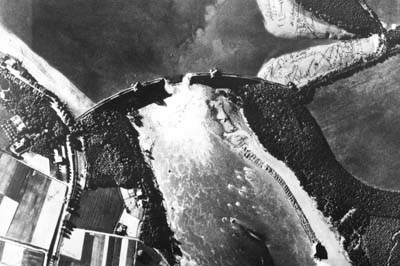

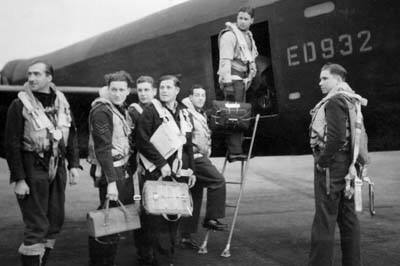
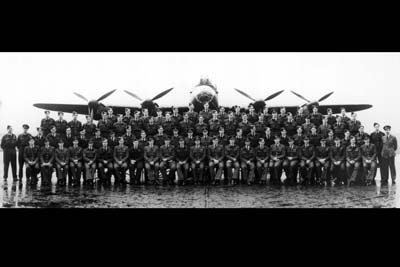
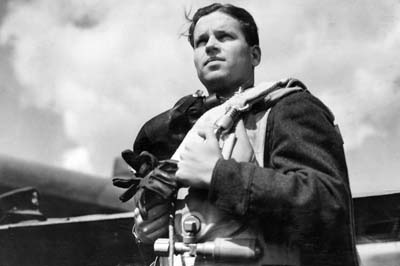



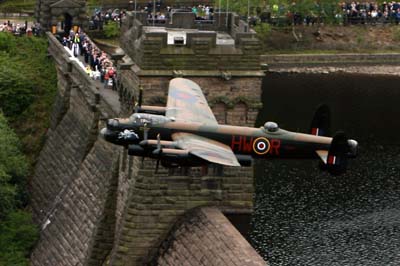





No comments:
Post a Comment